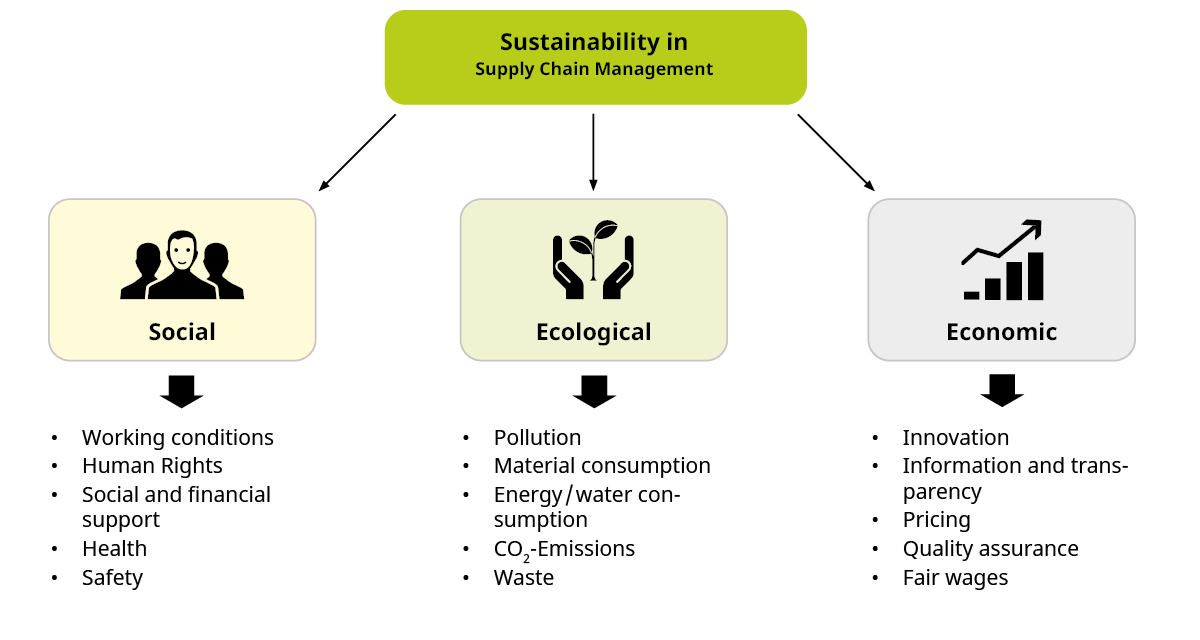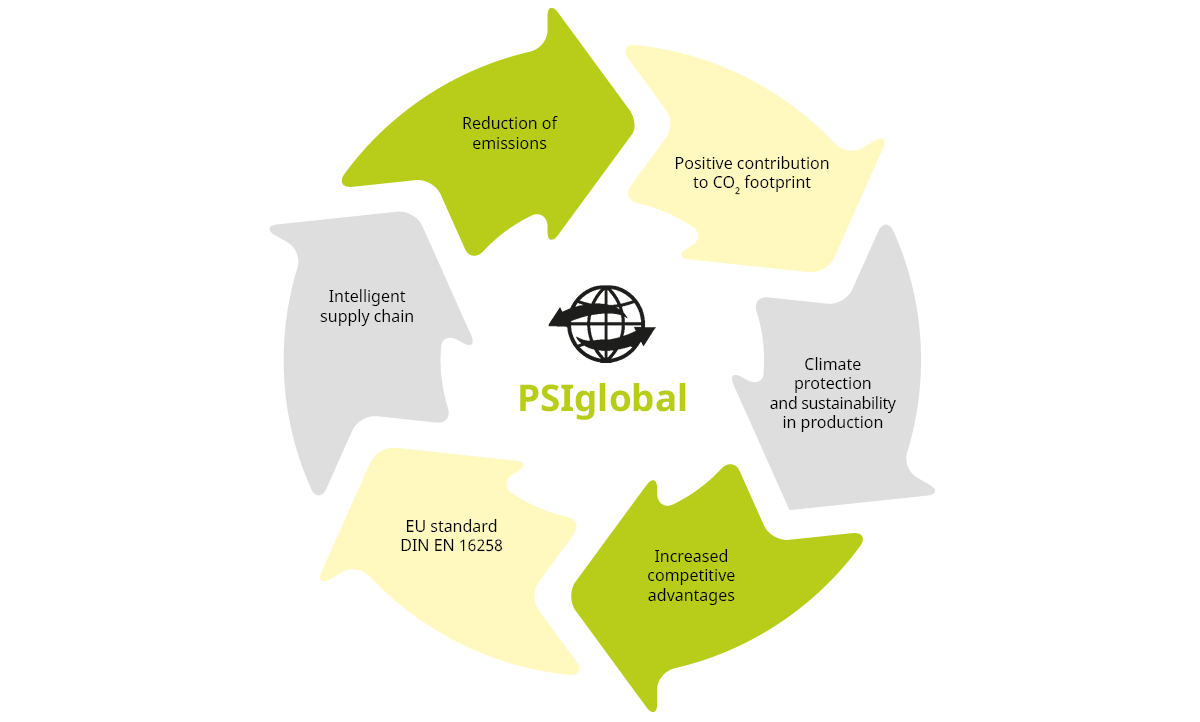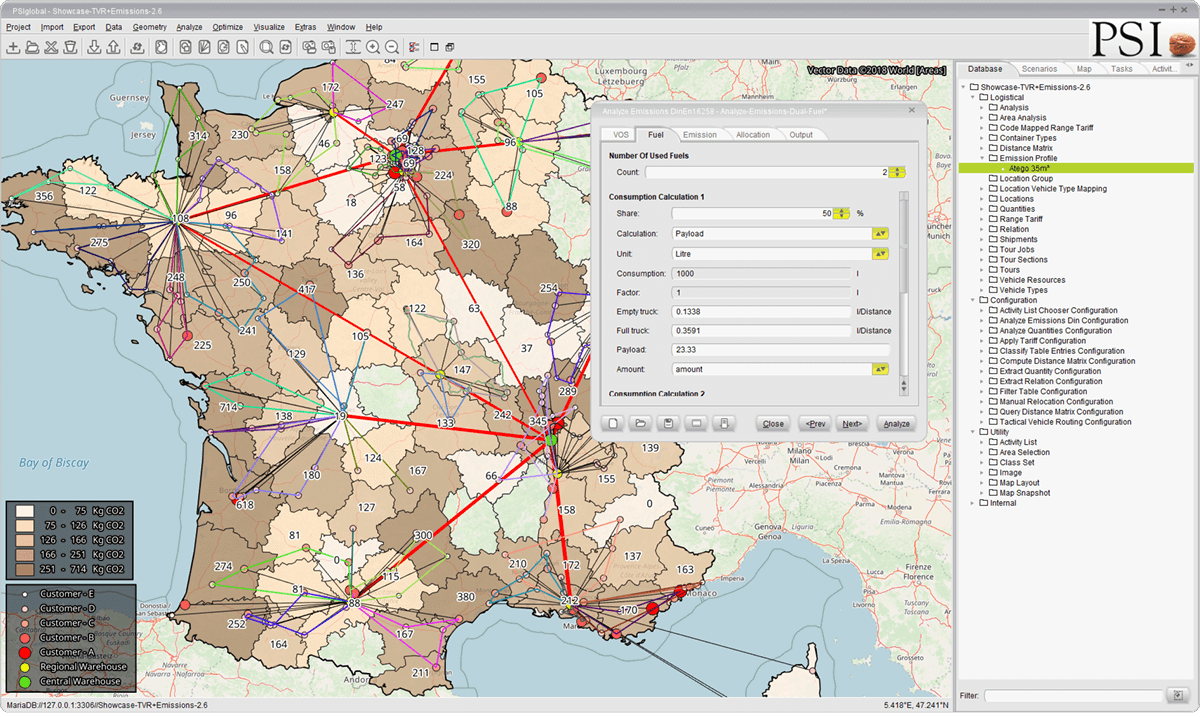Sustainability has increasingly become a core topic in the logistics industry. The sustainable and economic contribution to reducing CO₂ footprint has become an important competitive factor. How can software ensure the determination and reduction of CO₂ emissions in transport logistics through intelligent Supply Chain Network Design?
The relevance of sustainability in supply chain management has increased over the last two years according to the results of a survey of approximately 200 companies (German only). About 67% of the decision-makers said that sustainability is highly important for their company. However, only 19% of respondents actually record the CO₂ footprint of their company.
When implementing a green supply chain, companies often become passive. According to the survey, the reason for this is the lack of customer demand. Companies that are already reducing their carbon footprint would also expand further sustainability measures. About three quarters of these companies achieve additional cost and emission savings by optimizing existing processes. Overall, the companies surveyed have recognized the importance of a green supply chain but a comprehensive change has still to be made.

„Climate risks are also investment risks” is the message of Philipp Hildebrand, Vice Chairman of the investment company BlackRock Inc. in the margins of the World Economic Forum 2020 in Davos.
He describes a current key challenge for commercial enterprises. According to the German Freight Forwarding and Logistics Association, calculating energy consumption and greenhouse gas emissions forms the basis for the climate protection strategy of a company. Therefore, the work does not end with the calculation of the emission values – it rather begins with it.
What is supply chain network design?
Supply Chain Network Design (SCND) describes the discipline used to determine the optimal location and size of warehouse sites and warehouse throughput.
Optimization of the supply chain in favor of climate protection
What can a company do to design fair and environmentally friendly supply chains? The Federal Ministry of Labor and Social Affairs recommends analyzing supply chains to determine their real social and environmental impact.
For example, a powerful emission calculator that supports the standardized procedure for calculating emissions can provide all necessary prerequisites. The associated reducing effect on the CO₂ footprint – and therefore in favor of climate protection – is becoming an increasingly important, differentiating aspect in competition for companies when designing their supply chain.

According to the survey, 45% of the logistics decision-makers surveyed said that they increasingly rely on multimodal solutions to be able to carry out transports in a cost-efficient and environmentally friendly manner. 37% of companies also said that they would rely on local resources in the future to make supply chains more sustainable. However, more than half (53%) of the logistics decision-makers surveyed would like advice on how to reduce the carbon footprint.
Emission calculations provide information on CO2 footprint
Using a software system, companies can automatically calculate the expected energy consumption for network and route planning and at the same time show the resulting greenhouse gas emissions (CO₂ footprint) according to EU standard DIN EN 16258.
DIN EN 16258
In accordance with the standard DIN EN 16258, logistics service providers are obliged to provide information on emissions caused. DIN EN 16258 “Methodology for calculation and declaration of energy consumption and GHG emissions of transport services (freight and passengers)” describes a standardized procedure for calculating emissions.
The emissions can be determined and shown either based on route planning or actual driven route kilometers or with shipment data using an emissions tariff stored in the system. Ideally, the operation of the dialog interface should follow the steps for emission calculation specified in the standard and should also be designed to save resources.
Detailed list of all consumed resources
At best, the functions determine the CO₂ footprint not only for road transport, vehicles, partial routes and respective goods. Rather, it should also be possible to determine the emissions for air freight, rail and sea transportation and to present them – for example as ton-, volume- or container-kilometers.

Furthermore, other options enable the respective difference values to be shown in addition to the energy consumption tank-to-wheel and well-to-wheel as well as tank-to-wheel and well-to-wheel emissions, and to be allocated proportionally to the transported goods.
What competitive advantages result from a CO₂ footprint reduction?
- Routes designed for resource efficiency
- Optimally planned routes and transport networks
- Reduction of transit times
- Active contribution to climate protection

